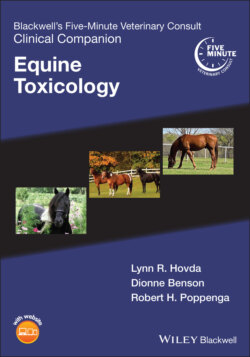Читать книгу Blackwell's Five-Minute Veterinary Consult Clinical Companion - Группа авторов - Страница 21
COMMENTS
ОглавлениеContact a pathologist at the diagnostic laboratory in your region if you are performing the necropsy. It is preferable to get some of the animals into the diagnostic laboratory for a pathologist to examine, but if this is not possible, then discussing options with a pathologist prior to performing field necropsies is recommended.
If you suspect intoxication, contact a toxicologist prior to sample collection for guidance on appropriate samples to collect and sample storage and submission guidelines.
In the event of a reportable disease, contact the state veterinarian in your region to keep them informed and allow for timely intervention if necessary.
Keep in mind the safety of you and your client, the environment and other animals. Always wear personal protection equipment for your safety.
Carcass disposal can be an important consideration and your state veterinarian or diagnostic laboratory can provide advice.
Keep in mind infectious diseases that can mimic an intoxication. A few examples of possible infectious diseases that might cause multiple deaths in a short time‐frame are anthrax, emerging diseases to which animals are naïve, and rare bacterial and viral diseases. If anthrax is a possible differential (multiple species or large numbers of animals affected; blood from all orifices – but not always), collect an eyeball and submit to the diagnostic laboratory for stain and culture. Opening the carcass will contaminate the soil with spores that will remain infectious for decades.
